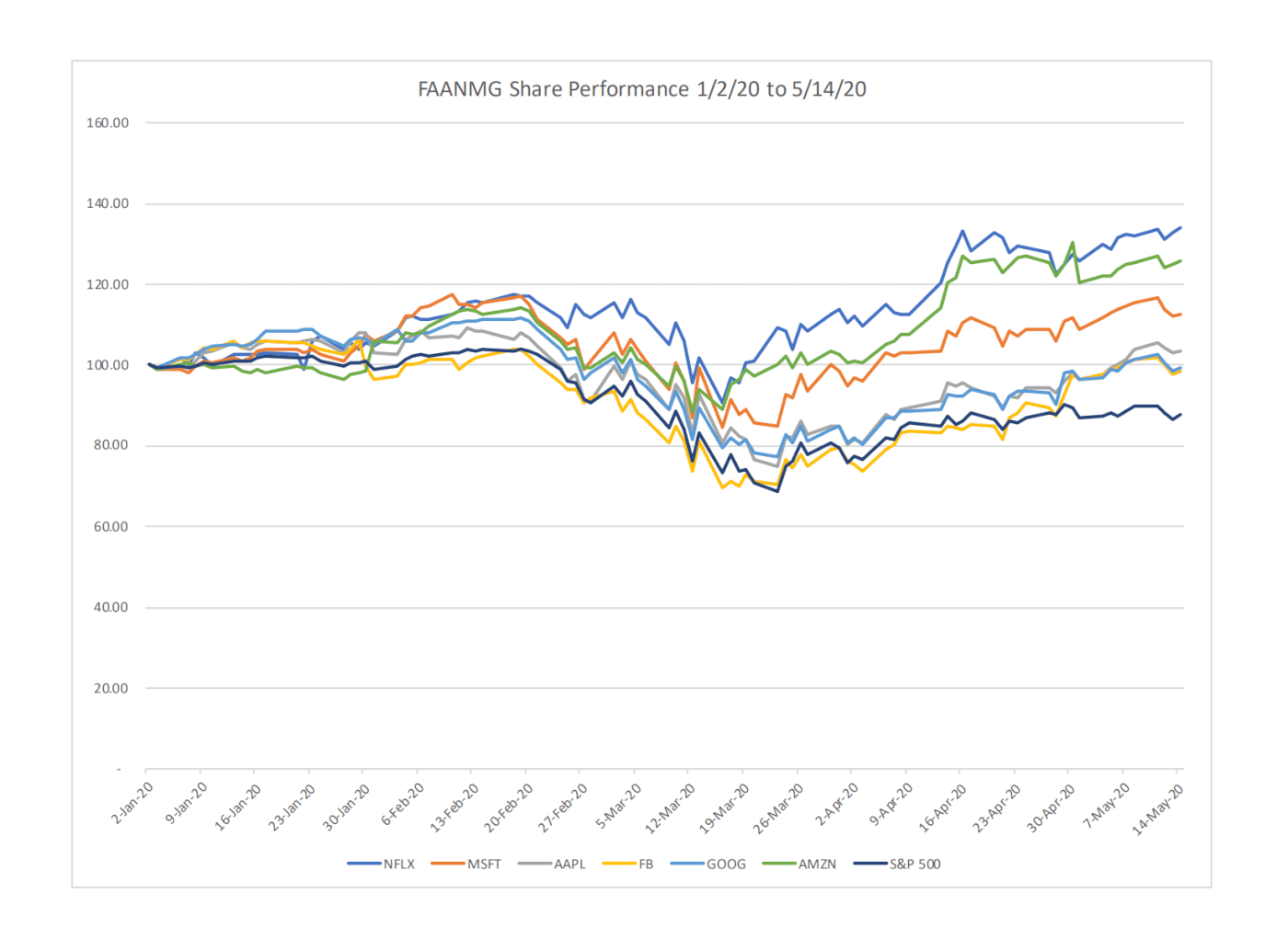Boeing’s 737 Max issues highlighted the company’s sacrifice of safety for financial performance, resulting in a tarnished reputation. The prioritization of profit over core values also damaged the FAA’s credibility and revealed a lack of accountability for top executives. This downfall serves as a reminder of the importance of maintaining core values and prioritizing them over short-term financial gains.

Inflation or Deflation, That is the Question?
So far, the Federal Government and the Federal Reserve have both pumped lots of money into the economy to slow the downturn and prevent a significant recession or depression. The Federal Reserve is buying all manner of private and public debt, which has increased its balance sheet from $4.1 trillion in late February to over $6.5 trillion by mid-April. Analysts predict that its balance sheet will reach $9 trillion by year-end. This massive injection of money has many people claiming that inflation is coming as they did in 2008. In 2008 inflation didn’t appear, at least for consumer goods, but it did for assets. Today, who knows? There are two camps, inflation or deflation.
Inflation
Many are clamoring, because of the substantial increase in public debt, that inflation is inevitable and coming soon. This camp points to the hyperinflation of the Weimar Republic as the basis of their argument. However, at the end of WWII, most countries had a much larger debt to GDP ratios than they do today, and inflation was modest at best. Before the COVID crisis, Japan’s net debt was 154 percent of GDP and Italy’s 121, yet neither was experiencing inflation. Japan was close to deflation.
Taking the equation of exchange, MV=PQ where:
-
M = money,
-
V = velocity,
-
P = prices, and
-
Q = quantities.
P*Q is equal to GDP. Velocity is the same as turnover. So, money “turns over,” or gets spent multiple times, until it equals GDP. Thus, if V remains constant while M grows, P will rise, and price inflation will happen until Q catches up.
In 2008, QE and its progeny offset the contraction of credit-backed money as banks stopped lending. As broad measures of the money supply have grown slowly since the 2008 crisis, and wages remained stagnant until about two years ago, resulting in MV remaining relatively constant. In 2008, the crisis was a financial crisis; thus, quantities didn’t fall much, resulting in prices not increasing.
Today, U.S. M2 and Divisia M4 have both shown significant increases over the last two months. Rapid increases in monetary growth with constrained output due to workforce and supply chain disruptions forecasts a rise in inflation. This latter argument, rather than historical comparisons, worries me the most.
Deflation
Other commentators are arguing that deflation is coming and base their arguments on the following:
-
Money acts as a cushion for unexpected expenses. When facing an uncertain future, people tend to hold onto money balances.
-
Money velocity peaked with the end of the stagflation of the 1970s and has been falling since. When inflation is high, people don’t hold money as it loses value; when inflation is low, they are willing to hold more.
-
Low-interest rates further dampen velocity as the opportunity cost of holding money is low.
-
For 30 years, Japan has experienced near-zero interest rates, massive government borrowing, and growth in the money supply without generating growth or inflation.
-
While oil prices have recovered slightly, they are still down dramatically from pre-crisis levels. Low prices for oil – and commodities more generally – following the COVID lockdown will likely keep consumer price inflation very low for a while.
-
Producer Price Inflation, the price of goods at the factory gate, is showing a fall. Lower costs for producers will result in lower prices of products.
-
To survive, many companies are heavily discounting prices to sell off inventory and raise cash. As things open up, businesses may continue this trend to lure consumers back into stores.
-
The U.S. has lost 30 million jobs over the last six weeks. With significant unemployment, wage disinflation is now a concern. There is anecdotal evidence of companies lowering wages to lower costs. Lower wages means lower production prices and ultimately lower retail prices.
-
The Weimar Republic’s hyperinflation of 1923 was the result of a political crisis, as are most cases of hyperinflation. Hyperinflation is not the result of a central bank printing excess money, nor an overly generous level of government spending.
-
The trade war between the U.S. and China, if neither side gives, will lead to an increase in prices, but lower profits and investment by companies. This overall may lead to deflation if the price increases, don’t boost employment and investment sufficiently.
Hamilton Bolton summarized his observations in a 1957 letter as follows:
“In reading a history of major depressions in the U.S. from 1830 on, I was impressed with the following:
-
Some outside event, such as a major failure, brought the thing to a head, but the signs were visible many months, and in some cases years, in advance.
-
None was ever quite like the last, so that the public was always fooled thereby.
-
Some panics occurred under great government surpluses of revenue (1837, for instance) and some under great government deficits.
-
Credit is credit, whether non–self-liquidating or self-liquidating.
-
All were set off by a deflation of excess credit. This was the one factor in common.
-
Sometimes the excess-of-credit situation seemed to last years before the bubble broke.
-
Deflation of non-self-liquidating credit usually produces the greater slumps.”
The question that will decide the fact is if COVID has lowered the velocity sufficiently to prevent inflation or take us into deflation. No one knows at present. I am leaning towards deflation; however, in the 1970s, there was an unexpected surge in inflation, which could happen again.
I was taught inflationary accounting at business school, so there are several CFOs who have experience of an inflationary environment. However, deflationary environments have been absent from the Western world for generations, and we have little experience in how to manage in such a world.
Keep watching the data and be prepared either way.
Copyright (c) 2020, Marc A. Borrelli
Recent Posts
The Downfall of Boeing: A Lesson in Core Values
Resolutions, Here We Go Again.
In reflecting on 2021 resolutions, the author scored themselves in three categories and sought to improve success in 2022 by addressing friction points. Drawing on advice from social psychologist Wendy Wood, the author identified areas to reduce or increase friction in their failed resolutions. By making these adjustments, the author aims to enhance their goal achievement and encourages others to consider friction when setting resolutions.
You need to take an extended vacation. No, seriously, you do.
COVID has taken a toll on all of us. If you have not taken an extended vacation in a while where you disconnect, you need to now. You and your business will benefit.
Becoming Famous in Your Niche: The Success Story of Linn Products Limited
In a previous discussion, I highlighted the importance of being famous for something. Being well-known in your niche can help you: Concentrate on your strengths Connect with your target audience Communicate your offerings more effectively Receive referrals Identify...
Understanding and Optimizing Your Cash Conversion Cycle
Understanding and optimizing the Cash Conversion Cycle is crucial for business growth, as it impacts cash flow and the ability to access external capital. This cycle consists of four components: Sales, Make/Production & Inventory, Delivery, and Billing and Payments. To improve the Cash Conversion Cycle, companies can eliminate mistakes, shorten cycle times, and revamp their business models.
Discovering Your Niche: Why You Need to Be Famous for Something
As an entrepreneur, it’s crucial to specialize in a specific area and become famous for something, allowing you to generate referrals and build your brand. Understanding the “job” you’re hired for helps you stand out in the marketplace and communicate your value proposition effectively. By providing value to your clients, you can adopt a value-based pricing approach, ensuring your business remains competitive and maintains a strong market presence.
Rethinking Your Pricing Model: Maximizing Margins and Providing Value
Rethink your pricing model by focusing on the value you provide and your customers’ Best Alternative To a Negotiated Agreement (BATNA). This approach can help you maximize margins while delivering better value to your clients. Assess your offerings and brainstorm with your team to identify pricing adjustment opportunities or eliminate commodity products or services.
Do you know your Profit per X to drive dramatic growth?
I recently facilitated a workshop with several CEOs where we worked on the dramatic business growth model components. One of the questions that I had asked them beforehand was, "What is Your Profit/X?" The results showed that there this concept is not clear to many....
The War for Talent: 5 Ways to Attract the Best Employees
In today’s War for Talent, attracting the best employees requires a focus on value creation, core customer, brand promise, and value delivery. Clearly articulate your company’s mission, identify your “core employee” based on shared values, and offer more than just a salary to stand out as an employer. Utilize employee satisfaction metrics and showcase your company’s commitment to its workforce on your website to make a strong impression on potential candidates.
Are you killing your firm’s WFH productivity?
Productivity remained during WFH with COVID. However, further analysis found that hourly productivity fell and was compensated for by employees working more hours. What was the culprit – Meetings. Want to increase productivity, have fewer meetings.















